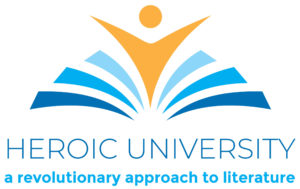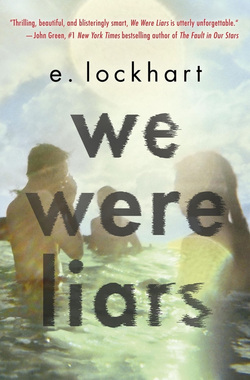Like at least the beginning part of The Goldfinch, this novel depicts the life of the moneyed class. However, instead of the Upper West Side Manhattan variety of wealth, this book deals with a clan of Boston Brahmins, rich enough to own their own island near Martha’s Vineyard, MA. On the first page, the protagonist, teenaged Cadence Sinclair Eastman, introduces us to her family: “The Sinclairs are athletic, tall, and handsome. We are old-money Democrats. Our smiles are wide, our chins square, and our tennis serves aggressive.” Think of the Kennedy family, but instead of Jack, Bobby, and Teddy competing through sports and politics, we have Penny, Carrie, and Bess, the three daughters of Tipper and Harris Sinclair. Cadence tells us:
The Sinclair daughters were sunburnt and blessed. Tall, merry, and rich, those girls were like princesses in a fairy tale. They were known throughout Boston, Harvard Yard, and Martha’s Vineyard for their cashmere cardigans and grand parties. They were made for legends. Made for princes and Ivy League schools, ivory statues and majestic houses.
And, indeed, life like that sounds like a fairy tale to us. However, there is a shadow upon this idyllic landscape. Cadence is sick, suffering from devastating headaches and a severe case of amnesia surrounding one of the magical summers on the family’s Beechwood Island. Cadence knows something traumatic happened that year, but no one will tell her the story. So two summers later, Cadence insists on returning to the island, sure that her memories will return if she revisits the family homes and reunites with her beloved “Liars”– her cousins Mirren and Johnny, and Johnny’s friend, Gat Patil, the nephew of the man that Johnny’s mother is dating. Best friends and, in Gat’s case, love interest, Cadence only sees her companions over the summers shared on the island, but is convinced that they are the ones who can best help her reclaim her life.
The bulk of the story goes back and forth between what Cadence calls “summer seventeen,” or the present, and “summer fifteen,” which is year she lost her memory. It carefully builds up the profile of life on the island, both present and past, as Cadences recalls random memories and eventually uncovers the truth about what happened that summer. The revelation is surprising, but well supported by the clues the author has subtly sprinkled throughout the story.
John Green, author of the aforementioned The Fault in Our Stars and the current YA golden child, calls the book “Thrilling, beautiful, and blisteringly smart,” and I wouldn’t disagree with that. It is a page-turner and an easy read, and it definitely showcases Lockhart’s skill (she was a finalist for the National Book Award, a Printz Award Honor winner, and a Cybils Award winner). She does a fantastic job of capturing that kind of privileged life that most of us will never experience, and deliberately casts it as a modern-day fairy tale, or even as a drama of Shakespearean proportions.
But as I’m always telling the students in my literature classes, “Your greatest strength is your greatest weakness.” This is definitely Cadence’s story, and we see her struggling to find her authentic self within the confines of her family’s expectations around what it is to be a Sinclair. But with all its fairy-tale-like otherworldliness, most of the other characters lack definition. I had a hard time remembering which of the Sinclair daughters were which, or which cousins belonged to which families. Even among the Liars, I sometimes felt that characteristics were being ascribed to them based more on the fact that Cadence/the author said so than it being demonstrated through their actions and decisions.
So while I do recommend the book, for its beautiful pictures and its engrossing mystery and its truths about families and money and power, I found it lacking in what I liked most about both The Goldfinch and The Fault in Our Stars, which was their wonderful, fully-featured characters. Still, it is a worthy read, especially at this time when so many of us are starting our own summer traditions and adventures, and probably spending more time with our own extended families, with all their own mysteries and dramas.

